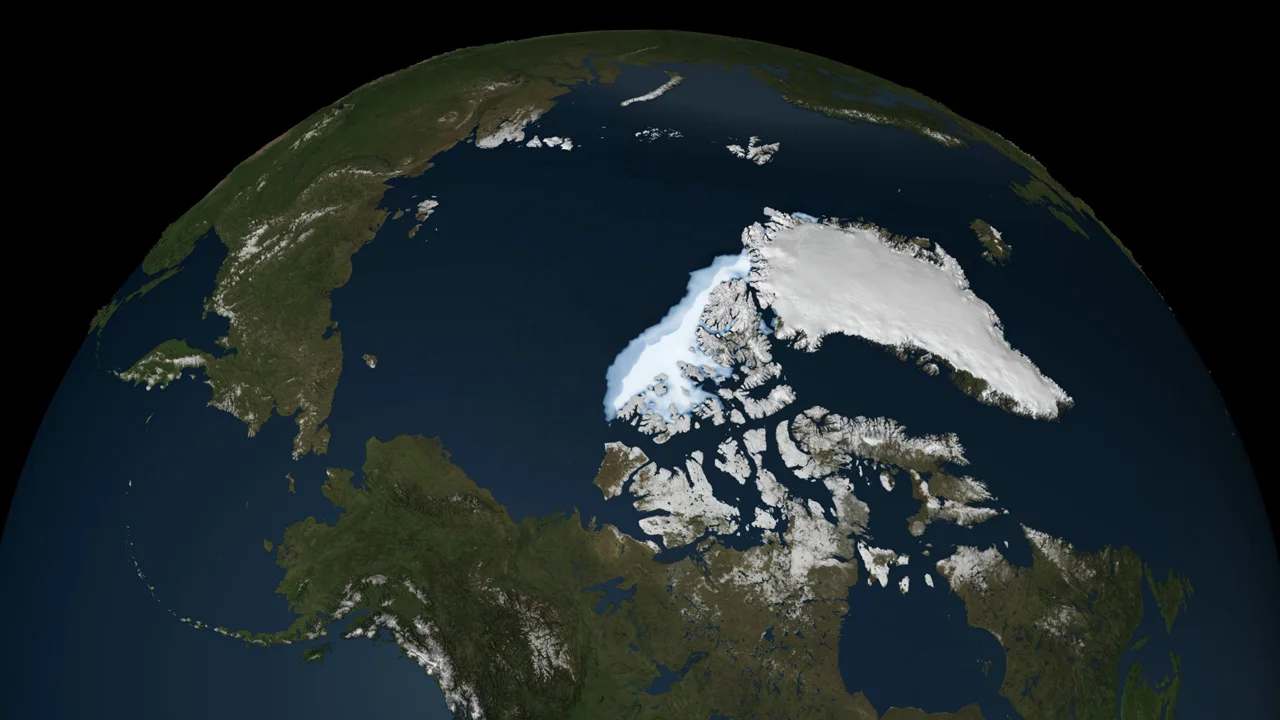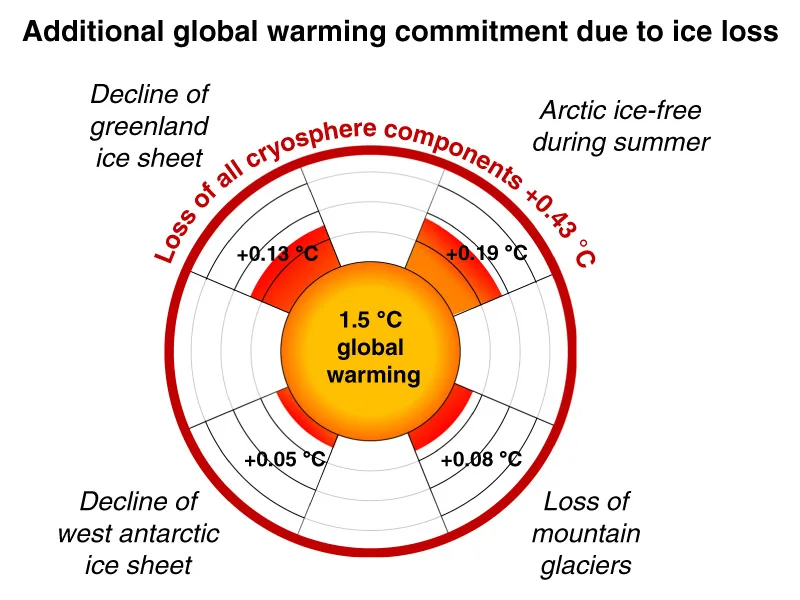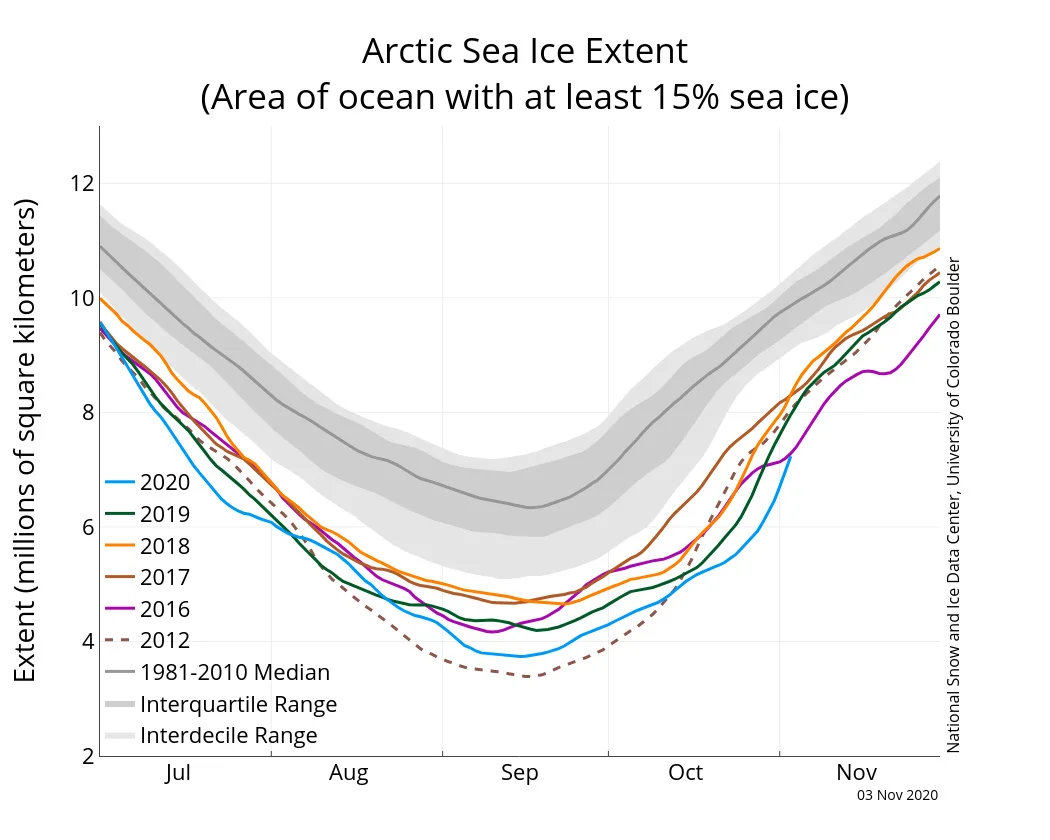
Here's what would happen if all the ice in the Arctic melted
Ice loss due to global warming is fueling a vicious cycle, leading to even more sea ice loss.
With our planet continuing to warm due to greenhouse gas emissions, we expect to see years in the not-too-distant future where Arctic sea ice completely melts away during the summer. According to a new study, this ice loss is expected to cause significant additional warming that will be felt around the planet.
Arctic sea ice is a critical component of Earth's climate. By the mere presence of its bright surface, this ice has a moderating effect on global warming. Most surfaces absorb incoming sunlight and then radiate that energy away as heat, which is readily absorbed by greenhouse gases in the atmosphere. Thus, as the concentration of greenhouse gases in the air increases, more heat emitted by the Earth is being absorbed, causing global warming and climate change.
Ice, on the other hand, reflects sunlight directly back into space. Greenhouse gases do not absorb sunlight — whether it is directly from the Sun or reflected off a bright surface. Thus, ice actually prevents some of the sunlight that reaches Earth from contributing to the warming of the planet.
"If global ice masses shrink, this changes how much of the sunlight that hits the Earth's surface is reflected back into space. Decreasing ice cover in the Arctic exposes more of the darker ocean water that absorbs more energy," Nico Wunderling, lead author of a recent study from the Potsdam Institute for Climate Impact Research (PIK), said in a press release. "This is referred to as albedo feedback. It's like wearing white or black clothes in summer. If you wear dark, you heat up more easily."

This illustration demonstrates how high-albedo sea ice reflects sunlight back into space. At the same time, dark ocean water absorbs that sunlight, converting it to heat. Credit: NASA
Climate change predictions take albedo feedback into account, of course. Until now, though, there wasn't a way to separate out its direct impacts. By running numerous climate scenarios through their computer models, the research team was able to quantify how much of an effect ice-loss would have on global warming.
The most optimistic case for climate change, currently, is that we keep the rise in global temperatures to only 1.5°C above pre-industrial times. According to this study, however, even if we succeed, the loss of summer Arctic sea ice will push global warming up an extra 0.2°C beyond that goal.
When the loss of the Greenland ice sheet, mountain glaciers, and the West Antarctic ice sheet are factored in as well, the added temperature rise doubles to around 0.4°C.
"Yet every tenth of a degree of warming counts for our climate," study co-author Ricarda Winkelmann, who heads up the PIK research group that tackled this study, said in the press release. "Preventing Earth system feedback loops, or vicious circles, is thus more urgent than ever."

This graphic from the study shows the relative contributions of the different ice-loss factors on global temperatures, specifically in the case of keeping global warming capped at 1.5°C. Credit: Wunderling, et al./Nature Communications
These extra tenths of a degree, according to the researchers, represent the warming impacts averaged over the entire surface of the globe. On a regional scale, however, the temperature increases will be much more extreme. Over parts of the Arctic and Antarctic, for example, temperatures would increase by up to 4.5°C.
"This is not a short-term risk," Winkelmann added. "The Earth's ice masses are huge, which makes them very important for our Earth system as a whole — it also means that their response to anthropogenic climate change, especially that of the ice sheets on Greenland and Antarctica, unfolds on longer timescales. But even if some of the changes might take hundreds or thousands of years to manifest, it's possible we trigger them within just a couple of decades."
WATCH BELOW: WE COULD SEE THE ARCTIC'S FIRST ICE-FREE SUMMERS BY 2035
Projections show that completely ice-free Arctic summers are not expected to become a regular occurrence until near the end of this century. Still, Arctic sea ice extent is already on the decline.
Just this year alone, the US National Snow and Ice Data Center tracked a nearly unprecedented melt across the Arctic, resulting in the 2nd lowest summer minimum in the record books.

The past six lowest summer Arctic sea ice extents. While 2012 still stands as the lowest in the record books, 2020 nearly broke that record. Credit: NSIDC
Based on the losses seen so far, and future projections for warming, the very first time we see an ice-free Arctic summer could be in as little as 15 years.







